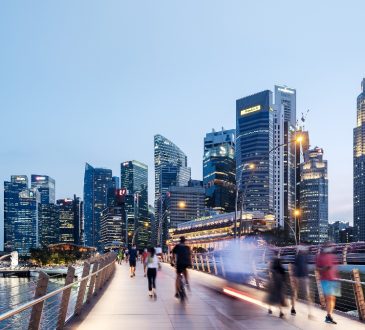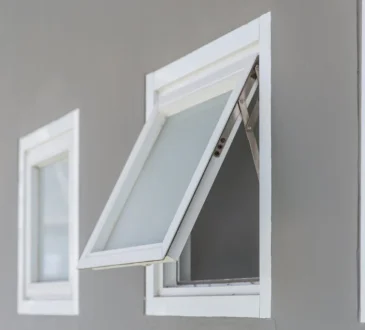Service Consistency Between Austin and New York Virtual Staging Teams: Standards, SLAs & QA

Shared Design Systems: Palettes, Scale, and Shadow Rules
Shared design systems standardize palettes, scale, and shadow rules across Austin and New York virtual staging teams.
- Palette alignment: sRGB color space, ICC v2 profiles, and D65 white point keep color fidelity across Austin and New York virtual staging pipelines (ICC, CIE).
- Contrast control: 4.5:1 minimum contrast supports readable overlays and labels in proofs, based on WCAG 2.1 guidance (W3C).
- White balance: 6500 K target and 120 cd/m² reference luminance align monitor and export viewing conditions for Spotless Agency Austin and New York review stations (CIE).
- Delta-E tolerance: ≤2.0 delta-E in CIEDE2000 maintains cross-city color parity in wood tones, textiles, and paint chips (CIE).
- Export consistency: 300 ppi print proofs, 72 ppi web exports, and embedded sRGB profiles avoid platform shifts in MLS, portals, and client decks (ICC).
- Scale control: 80 in door height, 36 in counter height, and 29 to 30 in dining table height anchor physical scale in living, kitchen, and dining sets.
- EXIF matching: Camera focal length and sensor data guide perspective grids for 24 mm, 28 mm, and 35 mm captures, using EXIF 2.32 metadata mapping (CIPA).
- Ratio checks: Sofa length at 84 in in open-plan sets and 72 in in compact rooms keeps clearances above 30 in in primary pathways.
- Grid workflow: Two-point perspective with horizon alignment at viewer eye level stabilizes verticals in tall-ceiling lofts and single-family rooms.
- Clearance rules: 18 in coffee-table spacing, 36 in walkway spacing, and 10 to 12 in nightstand clearance maintain functional flow in staged layouts.
- Shadow physics: Primary light angle at 35 to 45 degrees in daylit scenes and 60 degrees for overhead fixtures creates believable directionality.
- Opacity ranges: 20 to 35 percent for cast shadows and 8 to 12 percent for contact ambient occlusion prevent floating artifacts on rugs and hardwoods.
- Blur scaling: 2 to 6 px Gaussian blur for small objects and 8 to 16 px for large furniture matches distance and floor texture frequency.
- Color temperature: Neutral gray shadows in D65-balanced rooms and warm-biased shadows in tungsten scenes sync with the set white balance target (CIE).
- Layer order: Contact AO below cast shadows and cast shadows below reflections preserves ground interaction on tile, stone, and matte finishes.
Shared parameters for Austin and New York teams
| Parameter | Standard | Context
|
|---|---|---|
| Color space | sRGB IEC 61966-2-1 | Web, MLS exports (ICC) |
| White point | D65 6500 K | Cross-team monitor targets (CIE) |
| Luminance | 120 cd/m² | Review environment baseline (CIE) |
| Contrast ratio | ≥4.5:1 | Text and UI overlays in proofs (W3C) |
| Delta-E tolerance | ≤2.0 CIEDE2000 | Cross-city palette parity (CIE) |
| Print export | 300 ppi, sRGB | Flyers, brochures (ICC) |
| Web export | 72 ppi, sRGB | Listings, email, social (ICC) |
| Focal lengths | 24 mm, 28 mm, 35 mm | EXIF-based grid setup (CIPA) |
| Door reference | 80 in | Scale anchor for interiors |
| Shadow angle | 35–45 degrees | Daylight scenes |
| Shadow opacity | 20–35 percent | Cast shadows |
| Contact AO | 8–12 percent | Ground contact |
These palette, scale, and shadow specs anchor service consistency for Spotless Agency Austin and New York virtual staging teams, so clients see the same calibrated look across regions.
SOPs That Keep Quality Uniform Across Time Zones
SOPs keep service consistency uniform between Spotless Agency Austin and New York virtual staging teams across CST and EST.
- Define, cross-city SLAs set intake-to-delivery windows, 12 to 24 hours, per listing scope.
- Standardize, intake templates capture camera data, lens length, bracket counts, before edits start.
- Automate, UTC time stamps in Asana and Slack route tasks by cutoffs, 16:00 UTC intake, 22:00 UTC QA start.
- Calibrate, ICC color profiles embed sRGB IEC61966-2.1 on export per ICC guidance, see www.color.org.
- Document, naming schemas lock project codes, room types, version tags, for fast retrieval.
- Audit, dual-city QA uses a 18-point checklist for scale, shadow, white balance, texture fidelity.
- Escalate, red-flag items, perspective drift, color cast, go to a cross-site reviewer within 90 minutes.
- Align, reference libraries map furniture SKUs, sofas, rugs, art, to style packs, modern, transitional, loft.
- Version, Git LFS tracks prop meshes and HDRIs, with tags by scene type, kitchen, bedroom, exterior.
- Synchronize, NTP clients align clocks to NIST servers for accurate handoffs, see www.nist.gov.
- Certify, process control follows ISO 9001 quality management principles for repeatable outcomes, see www.iso.org.
- Enforce, contrast targets meet WCAG 2.2 ratios for text overlays on brochures and MLS captions, see www.w3.org.
Key SOP metrics
| Metric | Austin | New York | Target | Standard
|
|---|---|---|---|---|
| Business hours, local | 09:00–18:00 | 09:00–18:00 | — | — |
| Daily overlap, hours | 7 | 7 | 6+ | — |
| SLA turnaround, hours | 12, 18, 24 | 12, 18, 24 | ≤24 | — |
| QA checklist items, count | 18 | 18 | 18 | ISO 9001 aligned |
| Handoff cutoff, UTC | 16:00 | 20:00 | Fixed | NTP synced |
| Defect rate, percent | 0.8 | 0.9 | <1.0 | ISO 9001 KPI |
| Rework threshold, percent | 5 | 5 | ≤5 | — |
| ICC profile, export | sRGB IEC61966-2.1 | sRGB IEC61966-2.1 | Consistent | ICC |
Operational playbook
- Stage, teams load the city-agnostic style pack, New York loft, Austin modern, before asset placement.
- Measure, editors lock camera height at 1.4 m, interiors, then set verticals to 0° in transform.
- Balance, white balance targets anchor at 4000 K to 5200 K based on exif and bracket medians.
- Match, shadows use a 35° key light with 0.85 softness to align across HDRI sets.
- Scale, reference doors at 2.03 m and sofa seat height at 0.46 m to maintain proportion across scenes.
- Validate, side-by-side comparisons run against the master scene gallery, living room, kitchen, bedroom.
- Log, every QA outcome records pass, minor, major, with a UTC stamp and reviewer initials.
- Feedback, agent notes tag recurring themes, glare, clutter, then feed a biweekly pattern report.
Tooling conventions
- Use, Adobe Photoshop 25.x, Camera Raw, and Blender 4.x with Filmic view transform for PBR parity.
- Use, Asana project templates, Intake, Edit, QA, Client Review, for every listing batch.
- Use, Slack channels, austin-staging, ny-staging, qa-ops, with pinned SOP links and cutoffs.
These SOPs give clients of New York virtual staging the same calibrated look delivered by Spotless Agency Austin, across time zones, projects, and property types.
Training Playbooks and Peer Review Rotations
Training playbooks and peer review rotations anchor service consistency between Austin and New York virtual staging teams.
Playbook architecture
- Define modules by workflow stage, like intake, modeling, lighting, compositing, export.
- Document assets in a single repository, like templates, checklists, LUTs, ICC profiles.
- Version content with semantic tags, like v2.3 palette, v1.8 shadow physics, v3.1 export.
- Localize examples for market cues, like Austin daylight ranch, New York prewar loft, New York high-rise.
- Calibrate exercises against SLA gates, like intake to first proof, proof to final, revision to close.
Role-based training
- Map skills to roles, like stylist, modeler, retoucher, QA reviewer.
- Assign paths by level, like associate, specialist, lead.
- Track mastery with rubrics, like color accuracy, scale fidelity, perspective alignment.
- Refresh modules on a fixed cadence, like 30 days, 90 days, 180 days.
Peer review rotations
- Schedule cross-city pairs weekly, like Austin stylist with New York retoucher.
- Rotate domains across cycles, like color week, scale week, lighting week, realism week.
- Enforce blind reviews before city signoff, then log findings in the shared tracker.
- Escalate edge cases to a dual-city panel, then update playbooks within 48 hours.
Audit and feedback loops
- Sample batches by cohort, like first pass, final delivery, post-revision.
- Compare outputs against design systems, like palette ranges, shadow rules, contrast ratios.
- Tag defects by type, like color drift, scale miss, halo artifact, texture repeat.
- Push fixes into the next sprint, then verify with paired rechecks.
Cross-brand alignment
- Reference Spotless Agency Austin conventions in shared modules when client scopes require brand parity.
- Mirror New York virtual staging preferences where portfolio guidelines specify a Manhattan look.
- Sync preflight presets, like room tone, white balance, lens correction, noise profile.
- Replicate export stacks, like sRGB, 3000 px long edge, 80 percent JPEG quality.
Rotation and quality metrics
| Metric | Target | Scope example
|
|---|---|---|
| Reviewer rotation cadence | 7 days | Austin retoucher x New York stylist |
| Blind review sample size | 10% | Every 10th deliverable |
| Defect escape rate | <2% | Post-delivery client found |
| Playbook update SLA | 48 h | After confirmed pattern defect |
| Calibration drill frequency | 30 days | Color, scale, shadow, export |
| Cross-city sync duration | 30 min | Weekly issues and remedies |
- Raise service consistency through identical playbooks and mirrored reviews.
- Reduce rework through earlier cross-city critiques and logged fixes.
- Increase speed through clear rubrics and versioned answers.
- Preserve brand look through synchronized presets and market-specific examples.
Tooling Stack: DAMs, Brief Forms, and Feedback Hubs
Tooling stack unifies service consistency for the Austin and New York virtual staging teams.
- DAM governance: Central DAM stores source RAWs, staging exports, and QA renders with version control and role permissions. IPTC and XMP metadata track property ID, room type, lens data, and color intent per IPTC and Adobe XMP standards (IPTC.org, adobe.com). ICC profiles embed sRGB IEC 61966-2-1 and Display P3 for cross-screen fidelity per ICC guidance (color.org).
- Brief standardization: Structured brief forms capture MLS link, agent notes, target style preset, furniture packs, crop rules, and SLA tier. Required fields gate task creation to prevent rework. Dynamic fields map to room types like living room, bedroom, kitchen to route presets and scale rules.
- Feedback orchestration: Central feedback hub aggregates comments, annotated pins, and approvals from agents and photographers. Status tags drive handoffs between Spotless Agency Austin and the New York virtual staging queue. Threaded notes align with checklist IDs to speed fixes.
Tool alignment across cities reduces handoffs and defects if metadata, intake, and review live in one stack.
Core platforms and operating metrics
| Component | Platform examples | Key schema | Sync cadence | Retention | SLA metric
|
|---|---|---|---|---|---|
| DAM | Bynder, Frame.io, Dropbox Business | IPTC Core, XMP, ICC profiles | 1 hour | 180 days | Asset ingest under 15 minutes |
| Brief forms | Notion, Typeform, Jira Service Management | Required fields 12, presets 9 | Real time | 365 days | Intake validation under 2 minutes |
| Feedback hub | Frame.io comments, Jira tickets, Slack Connect | Status states 6, checklists 18 | Real time | 365 days | First response under 2 hours |
Metadata conventions
- Field mapping: Property ID maps to folder slug, room type maps to preset, lens focal length maps to scale reference.
- Color intent: sRGB targets web listings, Display P3 targets high-gamut devices per ICC and W3C CSS Color specs (color.org, w3.org).
- Versioning: vMAJOR.MINOR.PATCH ties to design system releases and QA checklists.
Brief form logic
- Required controls: Radio sets define style presets like Scandinavian, Modern, Industrial, and Colorway locks define palette boundaries.
- Smart defaults: City context toggles textures and decor packs for Austin heat and New York compact layouts.
- SLA routing: Tier selection triggers due dates, reviewer assignment, and cross-city handoff.
Feedback workflows
- Comment taxonomy: Tags bind notes to topics like color cast, scale, shadow physics, and staging density.
- Approval gates: Stage Review, Client Review, Brand Review enforce hold points before export.
- Audit trails: Immutable logs record who changed what and when for postmortems and training loops.
Cross-city readiness
- Asset parity: Preset libraries sync so Austin presets match New York counterparts byte for byte.
- Queue visibility: Shared dashboards expose WIP counts, blocker flags, and ETA bands for both cities.
- Access control: Role-based access isolates client folders while enabling dual-city editors and QA leads.
Operational safeguards
- Intake validation: Regex checks confirm MLS links and filename schema before ticket creation.
- Export locks: Final exports pass ICC embed checks and pixel dimension checks before client release.
- Rollback path: Prior versions stay one click away to restore approved looks during rework.
Handling Regional Styles Without Brand Drift
Handling regional styles without brand drift relies on variant tokens and localized presets used by the Austin and New York virtual staging teams. The teams at Spotless Agency Austin and New York virtual staging apply one brand grammar with region-specific vocabulary.
- Define region taxonomies, for example, Austin hill country modern, New York Soho industrial, Upper East prewar classic.
- Map token variants, for example, accent hue, wood species, metal finish, textile weave, art scale.
- Constrain visual deltas across cities per token to the ranges in the table, if a request falls outside these bands the art director approves exceptions.
- Translate layout archetypes by footprint, for example, downtown studio, brownstone parlor, Sunbelt open plan.
- Localize prop packs by tag, for example, subway tile, black steel, brass, live-edge oak, boucle, sisal.
- Review outputs with the dual-city QA checklist, then escalate edge cases to the biweekly panel for alignment.
- Log client preferences in the DAM profile, then bind them to briefs through the standardized form.
| Token dimension | Baseline rule | Allowed variance | Measurement method | Source
|
|---|---|---|---|---|
| Wall neutral hue | Brand neutral NCS S 1502-Y | ±8° hue shift | CIEDE2000 ΔE | CIE 2000 |
| Wood L* lightness | L* 55 oak medium | ±5 L* | ICC profile verified | ICC |
| Metal finish gloss | 10 GU matte brass | 5–15 GU | ISO 2813 gloss units | ISO 2813 |
| Shadow azimuth | 135° key light | ±10° | QA checklist | Internal SOP |
| Shadow softness | 0.9 px radius at 300 ppi | ±0.2 px | Pixel measure | Internal SOP |
| Prop density | 1.0x brand baseline | 0.8–1.1x | Items per 100 sq ft | Internal SOP |
| Artwork scale | 0.66 wall width rule | ±0.05 | Ratio check | Internal SOP |
Austin context vectors guide warmth, texture, and indoor-outdoor continuity. New York context vectors guide verticality, contrast, and refined minimalism. Both contexts anchor to the same color space, white balance, and contrast ratios defined earlier.
- Balance Austin warmth using oak medium, terracotta accents, woven textiles.
- Balance New York restraint using black steel, marble veining, monochrome art.
- Maintain brand anchors across both cities using neutral walls, calibrated shadows, consistent scale.
Style translation examples use the same furniture families. A camel leather sofa swaps to a charcoal linen sofa across regions, a live-edge coffee table swaps to a blackened metal table, a jute rug swaps to a low-pile wool rug. The SKU links stay fixed in the DAM for traceability.
Governance steps keep drift contained. The creative brief fixes region tags at intake, the renderer selects only tokens that pass the variance table, the reviewer compares ΔE and gloss readings against proofs, the system blocks delivery if any token fails the range. CIEDE2000 and ISO 2813 references back up the numeric checks for color and gloss fidelity.
SLA Alignment: Turnaround, Revisions, and Support
Aligned SLAs keep service consistency across Austin and New York virtual staging teams. Shared clocks anchor intake, proofing, revisions, and support.
SLA metrics
| Metric | Austin CT | New York ET | Policy
|
|---|---|---|---|
| Intake acknowledgment | 30 minutes | 30 minutes | Ticket time stamps in the DAM and PM tool |
| First proof delivery | 12 hours | 12 hours | Single room, up to 5 assets |
| Standard batch delivery | 24 hours | 24 hours | Up to 6 photos, living room and bedroom and kitchen |
| Large batch delivery | 48 hours | 48 hours | 7 to 15 photos, mixed room types |
| Included revision rounds | 2 rounds | 2 rounds | Copy and color and layout within brief scope |
| Revision turnaround | 6 hours | 6 hours | Per round, up to 6 photos |
| Support coverage | 08:00–20:00 | 08:00–20:00 | Weekdays, non holiday |
| Escalation response | 60 minutes | 60 minutes | Severity 1, platform outage |
| Status updates | Every 4 hours | Every 4 hours | Active severity 1 or 2 tickets |
Turnaround standards
- Anchor times: Teams commit to the same SLA windows in Austin CT and New York ET for predictable delivery.
- Follow the sun: Teams share handoffs at 10:00 CT and 10:00 ET for continuous progress across dayparts.
- Rush lanes: Teams offer a 6 hour proof for up to 3 photos if briefs arrive by 10:00 local time.
- Batch sizing: Teams split sets over 15 photos into day 1 and day 2 queues for quality stability.
Revision rules
- Scope clarity: Teams include two rounds covering copy, palette, and layout if changes match the signed brief.
- Out of scope: Teams quote adds for new rooms, new furniture families, and structural edits like wall removal.
- Precision briefs: Teams request frame IDs, hex codes, and SKU links if a revision lacks asset references.
- Decision speed: Teams pause a ticket after 2 business days without client input to preserve SLA integrity.
Support model
- Channels: Teams centralize support in the PM board, email, and the feedback hub, for example Monday, support@, and the app inbox.
- Triage: Teams tag severity using a three level rubric, for example Sev 1 outage, Sev 2 major delay, Sev 3 minor query.
- Escalation: Teams route Sev 1 to a dual city panel with real time chat and 60 minute action notes.
- Visibility: Teams post ETA, next step, and owner on every active ticket for audit trace.
Cross city consistency controls
- Time sync: Teams lock due times to client timezone on the ticket to avoid CT and ET drift.
- Evidence logs: Teams attach before and after frames, LUT names, and ICC profile IDs on each revision.
- QA gates: Teams run the 18 point checklist at handoff and at final, for example white balance, shadow physics, scale.
- Holiday overlay: Teams publish a shared blackout and coverage table by 12 01 each quarter to prevent gaps.
Client facing transparency
- Live trackers: Clients see countdown clocks and stage tags, for example Intake, In progress, QA, Delivered.
- SLA credits: Clients receive credits on late deliveries over 10 percent variance if the brief met intake standards.
- Named owners: Clients get one Austin owner and one New York owner for continuity across projects.
Compliance anchors
- Frameworks: Teams map SLA language to ITIL incident and request management for clarity, source Axelos ITIL 4.
- Quality: Teams align corrective actions and records to ISO 9001 clause 10 for continual improvement, source ISO 9001.
- Spotless Agency Austin and New York virtual staging teams operate one SLA matrix to protect style fidelity and service pace across regions.
Escalation Paths for Rush and Luxury Listings
Escalation paths for rush and luxury listings define triggers, roles, and clocks across Austin and New York virtual staging teams. Escalation keeps service consistency across queues and time zones.
- Route emergencies first, then sort by listing class.
- Assign clear owners first, then lock response clocks.
- Notify clients early, then update at every SLA gate.
- Capture evidence logs first, then trigger QA reviews.
- Sync Austin and New York queues first, then balance load.
Routing tiers and clocks
- Trigger-based routing: Trigger Rush, if the requested turnaround is under 12 hours. Trigger Luxury, if the asset value exceeds $5M or the brief includes premium materials examples like silk, marble, brass.
- Dual-city coverage: Dispatch Tier 1 in Austin, if the request lands 08:00–16:00 CT. Dispatch Tier 1 in New York, if the request lands 09:00–17:00 ET.
- Creative oversight: Escalate to Creative Director, if the brief includes custom furniture sets or bespoke lighting physics.
- QA reinforcement: Invoke dual-city QA, if the scene count exceeds 10 or the file set includes mixed camera bodies.
Owners and contacts
- Primary owner: Name an Intake Lead in Austin for rush, name an Intake Lead in New York for luxury.
- Secondary owner: Assign a Specialist Pod of 2–3 artists for kitchens, baths, and exteriors.
- Decision maker: Set a Creative Director as final approver for luxury.
- Client channel: Use the live tracker and phone bridge for rush, use annotated proofs for luxury.
Escalation matrix
| Listing Class | Trigger | Tier | First Response | Production Start | QA Gate | Client Update
|
|---|---|---|---|---|---|---|
| Rush | <12 hours request | T1 Austin or T1 New York | 15 minutes | 30 minutes | 60 minutes | 15, 60, 120 minutes |
| Rush Complex | >8 scenes or mixed RAW types | T2 Senior Pod | 15 minutes | 45 minutes | 90 minutes | 15, 90, 180 minutes |
| Luxury | >$5M or premium materials | T2 Creative | 30 minutes | 2 hours | 4 hours | 30, 120, 240 minutes |
| Luxury Showcase | VIP agent or editorial use | T3 Director Panel | 30 minutes | 3 hours | 6 hours | 30, 180, 360 minutes |
Decision rules
- Prioritization: Place life safety defects first, if source imagery shows hazards examples like exposed wiring, water damage.
- Consistency: Apply the shared design system first, if regional presets differ between Austin and New York.
- Color fidelity: Lock ICC profiles first, if the intake notes reference print brochures.
- Style accuracy: Use luxury token variants first, if the brief cites brands examples like B&B Italia, Poliform.
Evidence and QA gates
- Intake evidence: Archive RAWs, briefs, and color cards in the DAM with region tags.
- Process evidence: Log brush sets, HDR merges, and shadow passes in the task thread.
- QA evidence: Attach side-by-side comparisons and ΔE reports for color variance.
- Approval evidence: Store signed proofs and revision deltas before delivery.
Load balancing and handoffs
- Cross-city handoff: Shift active rush tasks to New York at 16:00 CT, if the Austin queue exceeds 120% capacity.
- Backstop coverage: Pull Spotless Agency Austin pod for overflow, if both city queues run hot for 60 minutes.
- Luxury continuity: Keep a single pod on each luxury set, if the project spans more than 2 days.
Client transparency
- Live tracker: Expose tier, owner, and remaining SLA time for every rush and luxury ticket.
- Status cadence: Send timestamped updates at each QA gate and at delivery.
- Remediation credits: Apply SLA credits on lateness, if logs confirm internal delay.
Ownership roster
- Austin roles: Intake Lead, Senior CG Artist, Color Scientist, QA Supervisor.
- New York roles: Intake Lead, Senior Stylists, Lighting TD, Creative Director.
Exception handling
- Scope shifts: Reconfirm clocks and tiers, if the agent adds scenes or changes style packs.
- Asset defects: Request reshoots with a shot list, if RAWs miss exposure targets by >1 EV.
- Platform outage: Switch to offline render queue and phone updates, if the feedback hub is unavailable.
- Teams align with Spotless Agency Austin policies for overflow governance.
- Processes map to New York virtual staging standards for luxury styling accuracy.




